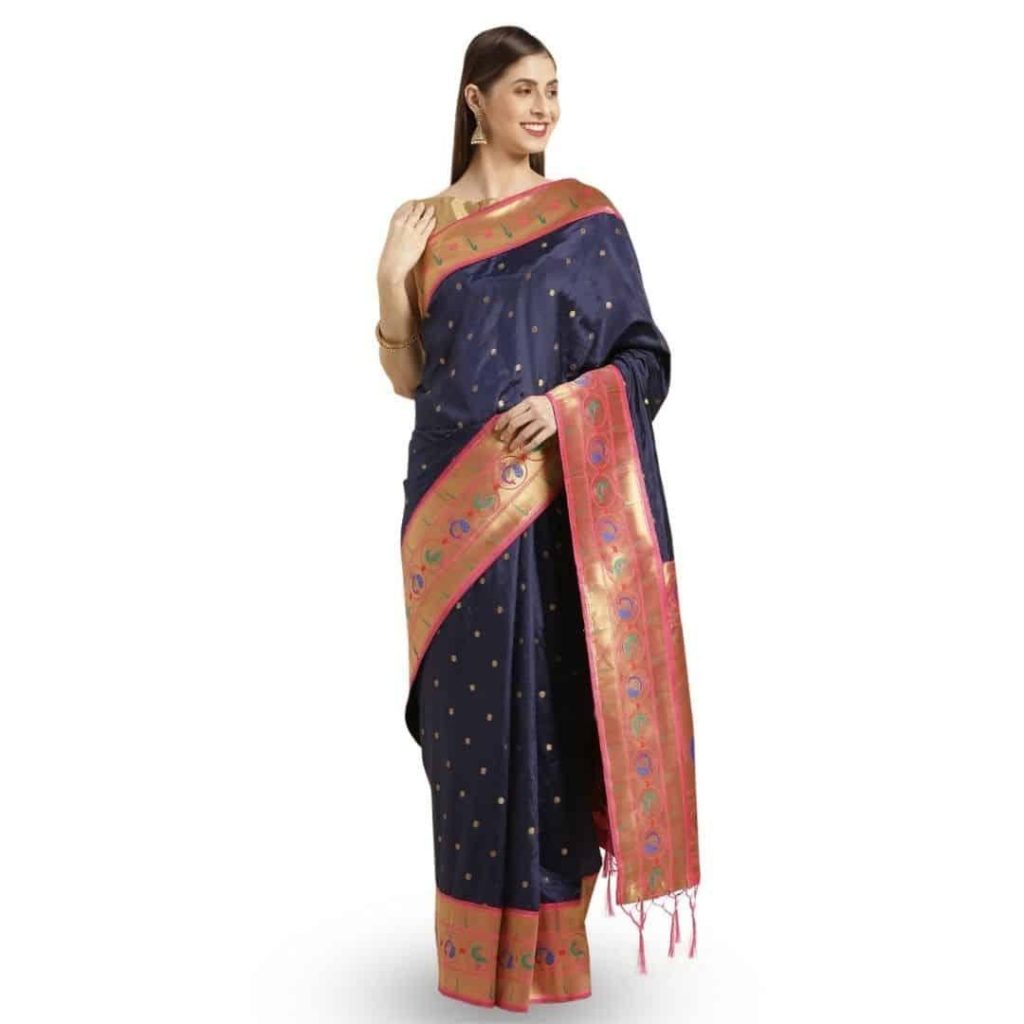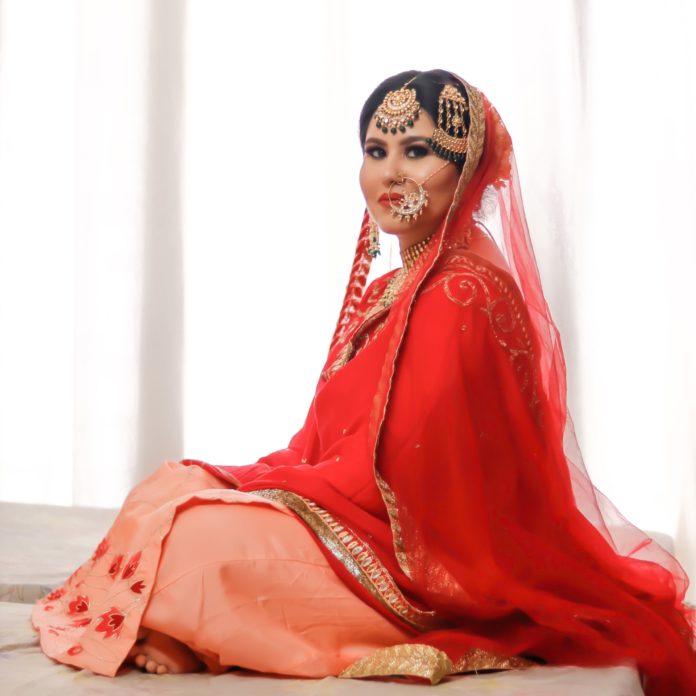If you want to embody the culture of Maharashtra in a piece of clothing then go for the Paithani Saree as it is said to be poems handwoven in pure gold, silver, and silk.
Weaving a new Paithani saree is no child’s play, and it takes careful coordination of the hand, foot, and eye that leads the weaver to a whole new journey where every thread comes together and binds varied beautiful elements into one splendid fabric.
The process is quite long and the whole saree may even take a month to a year to complete depending on the complexity of the pattern and design.
Wedding Paithani Saree is considered a crucial piece of the Maharashtrian bride’s attire. Centuries back, during ancient times, it was considered an ornamental treasure and was even used as a currency. Fine Silk was imported from China while real Gold & Silver yarns were put in the weaving of a Paithani. Resources say that Romans imported this Paithani fabric for gold of equal weight.
The Paithani saree is passed down among generations and is considered an heirloom in many households.
The features of a Paithani Saree
· These are handwoven and fine silk and pure metals go into the weaving process.
· Copper is applied to the Soft Metals to make them stronger.
· The Paithani has the status of a rich saree in India.
· It doesn’t grow dull or lose luster with time and as normal silk sarees lose luster around the folds, the Paithani doesn’t
· The Paithani utilizes a 2,000-year-old weave and makes use of the Tapestry Technique.
· It might even take 2-months to a year to weave just one saree.
· Handloom provides complete control over every thread thus enabling the weaver to weave special and different Paithani sarees.
· No two Paithanis are identical and their front and back look exactly the same.
The history of the Paithani

It is considered an aristocratic drape that the Royals wore and even considered the Queen of Silks. This craft of Paithani goes back to the Satvahana Dynasty that reigned between the 2nd century BC and the 2nd century.
The Paithani Silk Saree gets its name from its town of origin- Paithan in Aurangabad, located by the river Godavari. During the Mughal Empire, the art of Paithani weaving thrived especially under the rule of Aurangzeb. It is said that Aurangzeb reinvented the classical paithani & brought new elements of design to the weavers. Later, the Nizam of Hyderabad who was also an avid admirer of Paithanis, encouraged the art and had a huge hand in the survival of this weaving style. Begum Niloufer (of the Nizam family) is known for her contribution of the Pheasant bird motif (Parinda).
The Paithani Silk Saree weaving faced a downfall with the advent of the British rule & Industrial Revolution but the Peshwas’ of Pune saved the dying art and even gave birth to the Asawali, a motif (vine). Later, as the Paithani craft lost royal patronage, it became obscure until the government and private enterprises took a keen interest in the revival.
There are two varieties of the Paithani saree available:
1. Traditional Paithani
2. Brocade Paithani,
In these, the ancient textile provides blessings to the wearer by combining the elements of life.
The Traditional Paithani Silk Saree has a 28-inch Pallav, simpler design, and takes lesser time to weave. Brocade Paithanis silk saree has an intricate Pallav Design, 40 inches Pallav, is made by a highly skilled weaver and is woven with extreme caution as the silk threaded sticks are very sensitive. Motifs used in the sarees are highly traditionally inspired by the Ajanta Caves murals or derived from nature that form a huge part of nature.
If you want to purchase a Wedding Paithani Saree or a regular traditional Paithani Silk Saree then you should visit the online stores to check the Paithani saree collection online. There are a lot of dedicated stores that exclusively sell Paithani saree online for economical rates. Or you can visit a store too and get the touch and feel of the saree before you purchase it.









